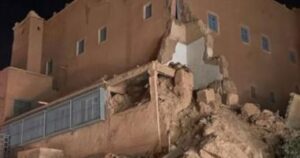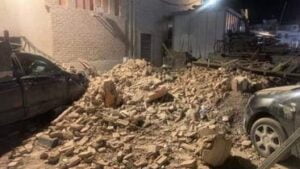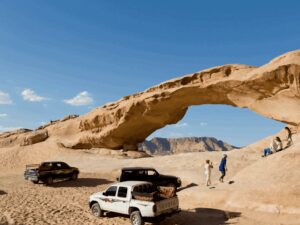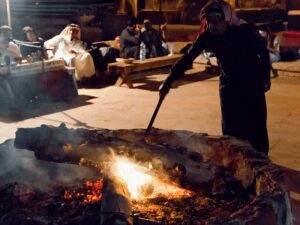In a devastating event that shook the tranquil surroundings of Marrakech, Morocco, on Friday night, a formidable earthquake struck the rugged terrain of the High Atlas mountains. This catastrophic natural disaster has claimed the lives of no less than 632 individuals, leaving in its wake a trail of demolished structures and a populace in distress as they fled their homes, according to reports from state television.
As of Saturday, the count of those injured has reached 329, as disclosed by state media, who have cited an updated initial assessment provided by the Interior Ministry. Tragically, many of the casualties are concentrated in remote mountainous regions that pose significant challenges for rescue efforts.
Marrakech, the nearest major city to the earthquake’s epicenter, bore witness to the collapse of several buildings within its historic confines, a UNESCO World Heritage site. Local television broadcasts have captured images of a mosque minaret reduced to rubble, resting atop crushed automobiles.
The Interior Ministry has issued a plea for composure, affirming in a televised statement regarding the death toll that the earthquake had inflicted its devastation across the provinces of Al Haouz, Ouarzazate, Marrakech, Azilal, Chichaoua, and Taroudant.
Montasir Itri, a resident of the mountainous village of Asni, situated near the epicenter, reported extensive damage to most houses in the area. He lamented, “Our neighbors remain trapped beneath the debris, and the village’s inhabitants are tirelessly working to rescue them using whatever means are available.”
Further to the west, near Taroudant, schoolteacher Hamid Afkar recounted his harrowing experience as he fled his residence and felt the unsettling tremors. He stated, “The earth trembled for approximately 20 seconds. Doors swung open and shut of their own accord as I hastily descended from the second floor.”
Morocco’s geophysical center has pinpointed the earthquake’s epicenter in the Ighil area of the High Atlas, registering a magnitude of 7.2. Meanwhile, the U.S. Geological Survey has recorded a slightly lower magnitude of 6.8, noting that the quake occurred at a relatively shallow depth of 18.5 km (11.5 miles).
Ighil, nestled within the mountainous terrain and home to small farming communities, is situated approximately 70 km (40 miles) southwest of Marrakech. The earthquake struck shortly after 11 p.m. (2200 GMT), plunging the region into turmoil.
This seismic event stands as Morocco’s deadliest since the 2004 tremor near Al Hoceima in the northern Rif mountains, which claimed the lives of over 600 individuals.
In response to the disaster, the United Nations has extended its readiness to assist the Moroccan government in supporting the affected population, as conveyed by U.N. spokesperson Stephane Dujarric in a statement.
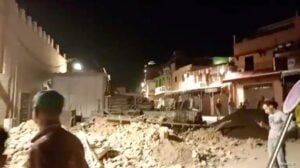
In Marrakech, the tightly packed old city bore the brunt of the devastation, with some houses collapsing. Residents, armed with sheer determination, worked tirelessly by hand to clear debris while awaiting heavy equipment, according to Id Waaziz Hassan, a resident of the area. Footage of the medieval city wall depicted significant cracks in one section and portions that had crumbled, leaving rubble strewn across the streets.
Brahim Himmi, another Marrakech resident, reported the emergence of ambulances from the old town and widespread damage to building facades. Fearful of another quake, people remained outdoors, as described by Houda Hafsi, 43, who noted, “The chandelier fell from the ceiling, and I ran out. I’m still on the road with my children, and we’re scared.”
Dalila Fahem, another resident, shared that her house displayed cracks and her furniture had been damaged. “Fortunately, I hadn’t gone to sleep yet,” she remarked.
In the capital city of Rabat, approximately 350 km north of Ighil, and the coastal town of Imsouane, located about 180 km to the west, residents fled their homes, gripped by the fear of a stronger tremor, as reported by Reuters witnesses.
Even in Casablanca, some 250 km north of Ighil, people who spent the night on the streets remained apprehensive about returning to their homes. Mohamed Taqafi, a resident, recounted, “The house rocked aggressively, everyone was scared… I heard people screaming, everyone went out of their houses.”
Videos shared on social media immediately after the earthquake, while yet to be verified by Reuters, depicted individuals fleeing shopping centers, restaurants, and apartment buildings in fear, gathering outside for safety.
You may also like
No related posts.


